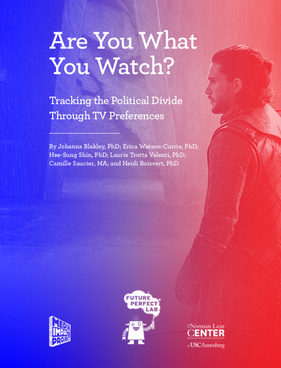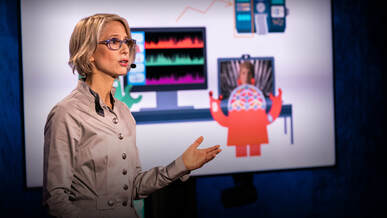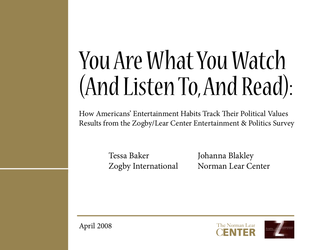

Highlights from "Are You What You Watch?"
|
Our previous research with Zogby

Everyone knows that America is politically polarized. Over the past 25 years or so, regardless of the party in power, about 37% of the country has self-identified as liberal or progressive or Democratic or “Blue;” about 25% of the population has self-identified as conservative or Republican or “Red,” and the remaining 35% percent — call them moderates, independents, centrists, swing voters or “Purples?” — think of themselves as belonging to the political middle. Does that polarization play out not only on the spectrum of political values, but also in other ways?
Download the Report Summary of 2008 Findings |
|
The Norman Lear Center's Media Impact Project researches how entertainment and news influence our thoughts, attitudes, beliefs, knowledge and actions. We work with researchers, the film and TV industry, nonprofits, and news organizations, and share our research with the public. We are part of the University of Southern California's Annenberg School for Communication and Journalism.
|
|
